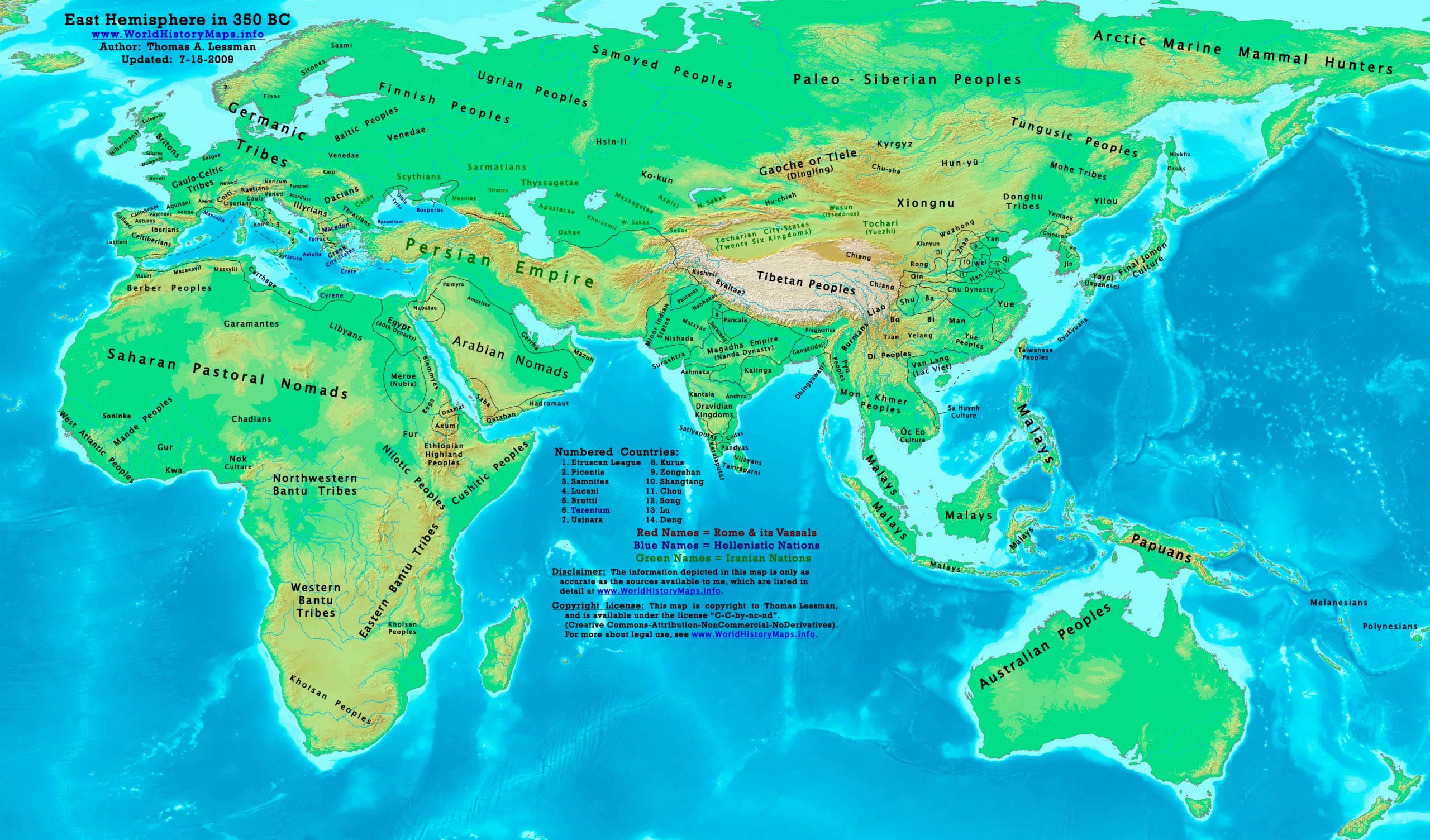https://www.worldhistorymaps.info/wp-content/uploads/2021/03/map-350bc.jpg
Primary Sources for East-Hem_350bc.jpg:
- The DK Atlas of World History, 2000 edition. (See specific references below)
- John Nelson. Interactive Historical Atlas of the World since 500BCE. Map of the “Countries of the World 1/1/350 BCE.”
World History Maps Inc., Alexandria, VA, 2008. Available at www.WorldHistoryMaps.com.
I – African information:
* African Tribal locations are derived from:
- The DK Atlas of World History. Map of “The Development of Complex Societies in Africa”. Pg 160.
(Bantus, Berber Tribes, Chadians, Cushites, Daamat, Garamantes, Gur, Khoisan Peoples, Kwa, Libyans, Mandes,
Nilotic Peoples, West Atlantic Peoples, etc.)
II – Asian information:
* East Asian (Chinese area) information is from:
- The DK Atlas of World History. Map of “Zhou China, 1027-403 BCE”. Pg 259.
- Albert Herrmann, Ph.D. History & Commercial Atlas of China. Map of “The Contending States Boundries c. 350 BC”.
* Greater India (Including modern Bangladesh, India, and Pakistan):
- The DK Atlas of World History. Map of “The Nanda and Mauryan Empires, 365-181 BCE ”. Pg 241.
- Joseph Schwartzberg. The Historical Atlas of South Asia. Map of “The Achaemenid Empire and the Magadhan Empire“.
* Korean & Manchurian information:
- Park Hyeon. Map of “History_of_Korea_300_BC.png”. Available on Wikipedia.
Note: Much of the information in this map was cross-checked with Bruce Gordon’s Regnal Chronologies.
c. 350 BC – Artemisia, widow of Mausolus, builds him a tomb at Halicarnassus so spectacular that his name provides a new word – mausoleum
c. 350 BC – Eudoxus of Cnidus proposes the concept of transparent spheres supporting the bodies visible in the heavens
c. 350 BC – Daoism, attributed to the mythical sage Lao Tzu, becomes a popular alternative to the solemnity of Confucianism
c. 350 BC – Private financiers in Athens give loans, take deposits, change money from one currency to another and arrange credit for travellers
c. 350 BC – Tea, now well established as a drink, features in a Chinese dictionary
c. 350 BC – The earliest description of a pulley appears in a Greek text
c. 350 BC – The brutal philosophy of Legalism contributes to the decline of the Zhou dynasty
c. 350 BC – The Mahabharata, India’s great national epic, begins to take shape
Source: historyworld.net

